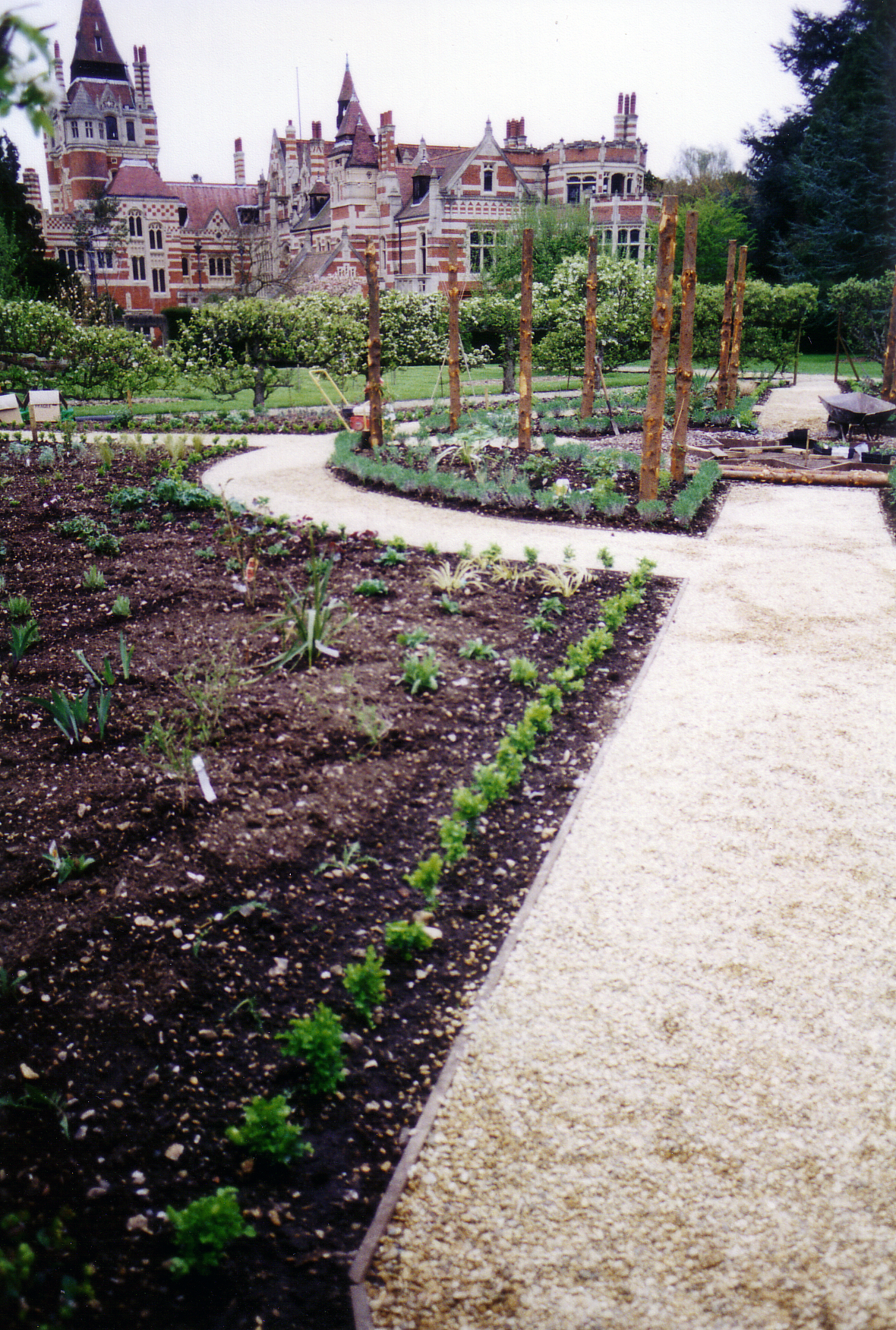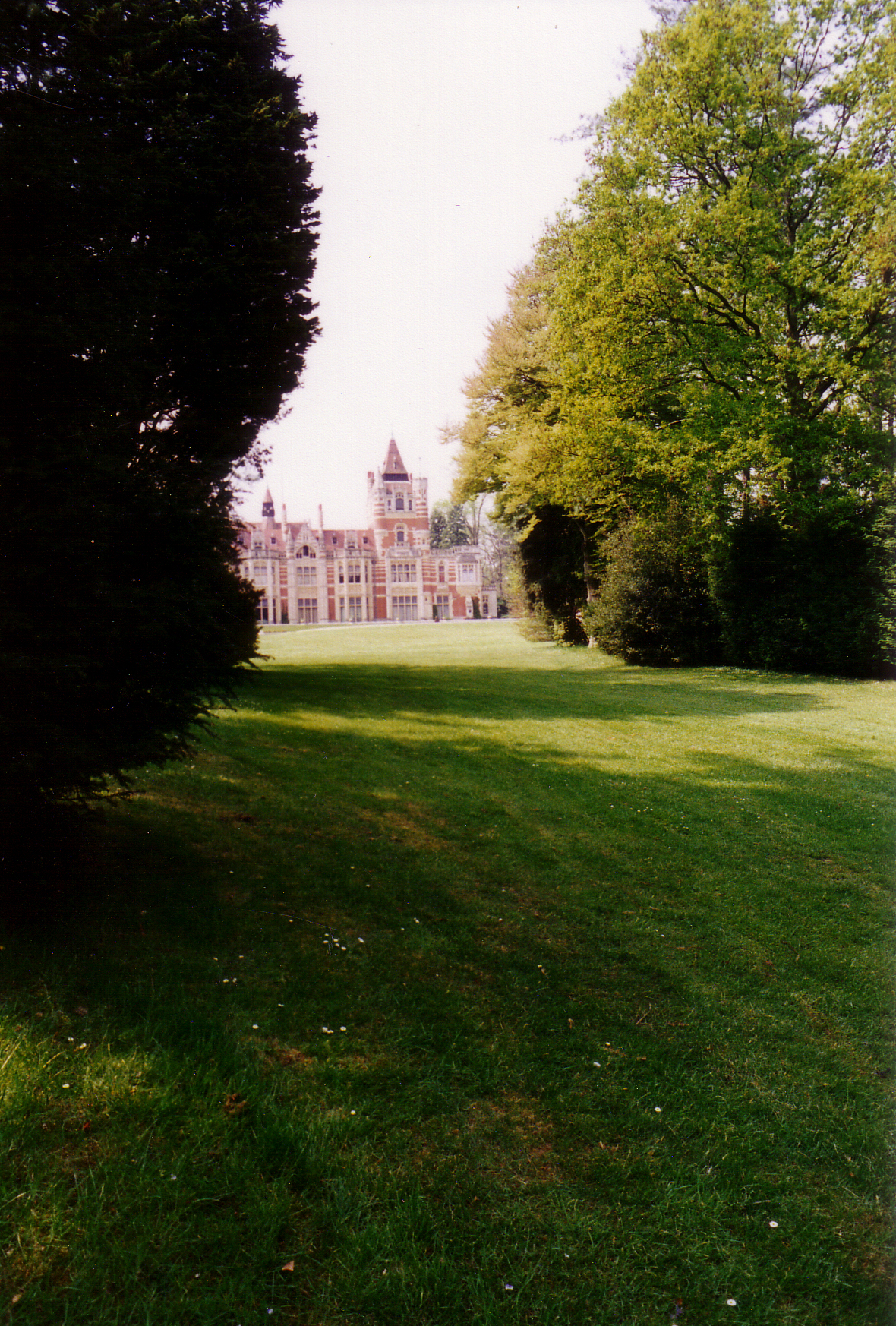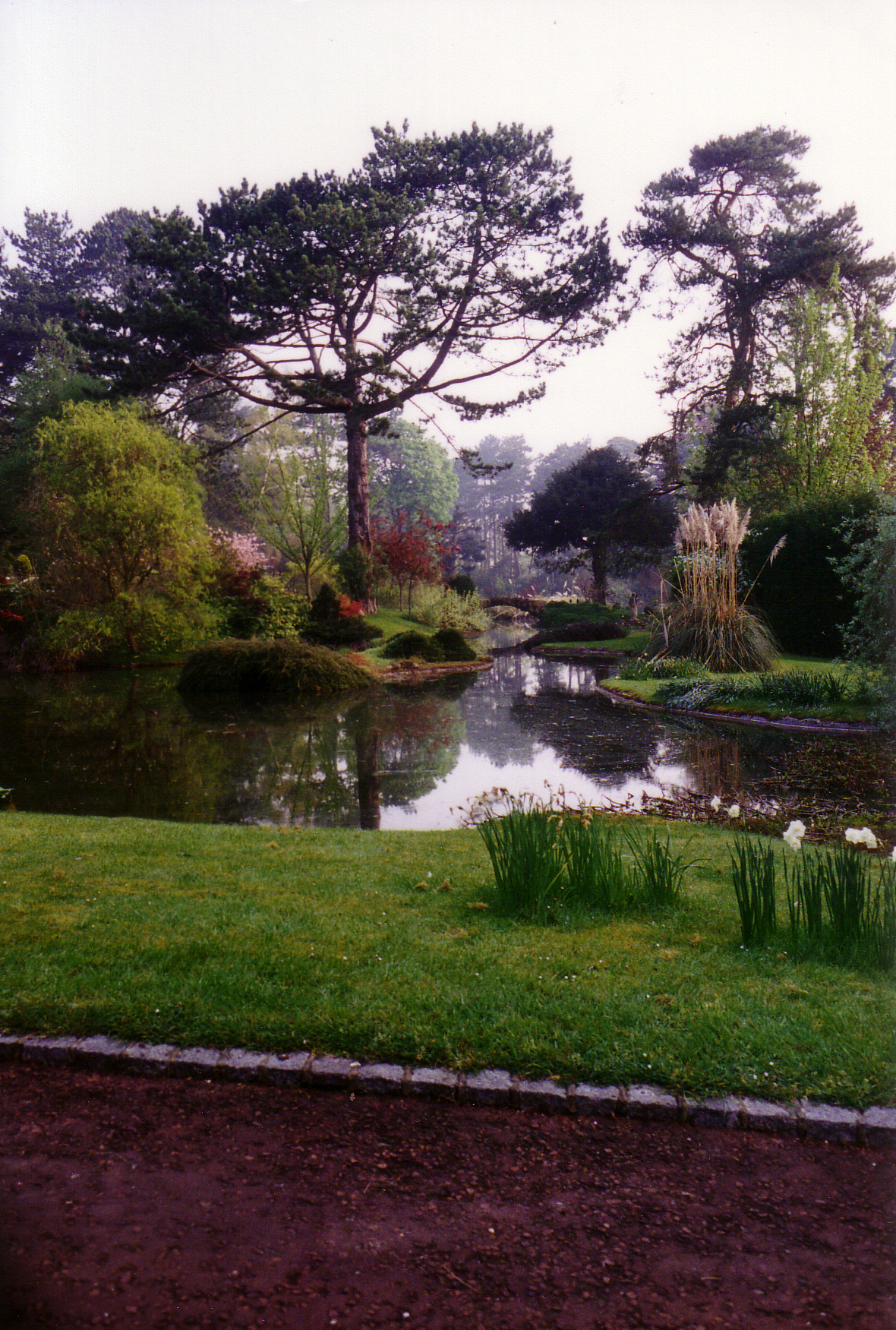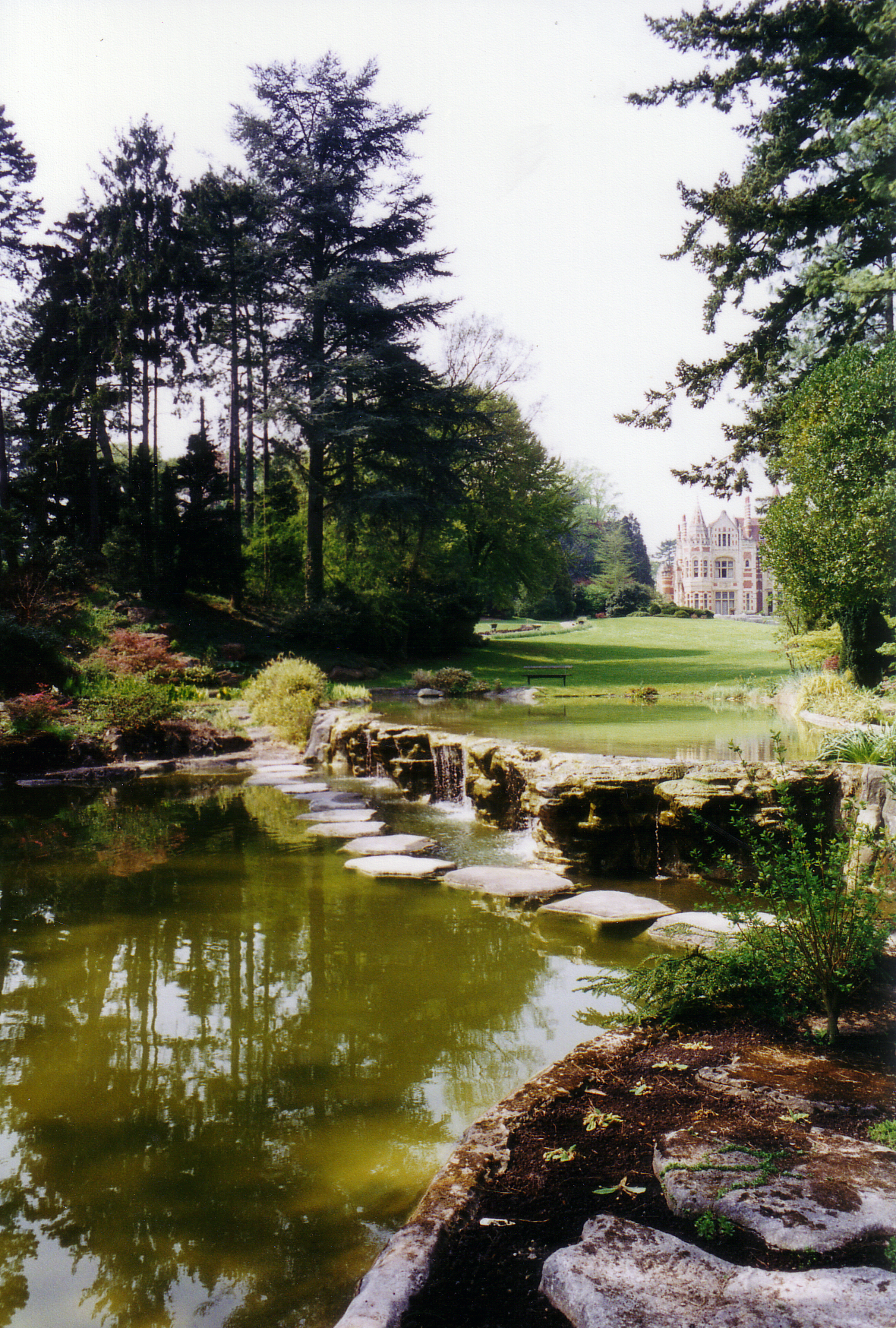John Knowles.net
The Research of David Stone
Friar Park and Sir Frank Crisp
© Judy Stone 2022
By way of leading into the research this article was written by Molly Rintoul, Judy Stone's aunt...
THE CRISP FAMILY by Molly Rintoul
Granny and Grandpa Crisp both grew up in the Bungay area. Grandpa's family were staunchly non-conformist and his maternal grandfather John Childs was one of the Bungay Martyrs who went to prison rather than pay the Church Rates. Grandpa paid for a Methodist chapel in Henley - later rather an embarrassment when for social reasons he joined the C of E and gave them a pulpit, both in the style of Friar Park. In spite of the gnomes and jokes and puns Friar Park was one of the great gardens of England in the first part of the century. The Matterhorn garden was unique, all the rock was brought from Yorkshire by rail - one rock per truck we were told. Apart from the lakes, lawns and woods and landscaping there was a Japanese garden, a rose garden, topiary and a sundial garden and four or five specialist little gardens with box hedges -a grey garden, Nebuchanezza's garden (grasses) and an Elizabethan garden etc. He had done a lot of research to find authentic Elizabethan plants. He also had a valuable collection of microscopes - now I believe in the Fitzwilliam Museum at Cambridge.
Only Catherine, his eldest child, shared his interest in the garden. The rest of the family resented the money lavished on it and I think he might have been bankrupt if he hadn't died in December 1917. He invited a great many people to stay at Friar Park, and Queen Mary, King George and PrincessVictoria (twice) came for the afternoon in 1917.
When Scott was in the Antarctic about 1911, Lady Scott - or Mrs Scott - stayed at Friar Park before Peter Scott was born. Sir Ernest Cassell (Edward VII's financial advisor) was another friend. He gave my mother a circular diamond brooch - presumably as a wedding present - which I have in a red Cartier case. Two other guests described by my mother as a "Black man" and an engineer turned out to have been Dulip Singh, son of Maharajah and England cricketer, and Sir Benjamin Baker designer of the Forth Bridge!
Grandpa had the Victorian habit of communicating in writing with people in the same house; a footman would deliver notes to the nursery which might be a summons for my older cousin, Joan, to appear in the drawing room after tea (which entailed a complete chnage of clothes). More often it was "Please see that the children don't throw stones on the ice or climb on the top pinnacle of the Matterhorn" or "they musn't use the carpenter's chisel to make sparks on the grindstone".
We paid very little attention to these prohibitions. I think the carpenter sensibly left an old chisel out for us to make sparks. Throwing stone on the ice was to see if it would break or bear [our weight] and then the problem was to get the stones off at the risk of it not bearing our weight.
Grandpa spent most of his time in his study and I only have two memories of him. Once I was called in from the terrace and presented with a blue and white china slipper supposedly copied from one of Queen Victoria's but the proportions were impossible for even a child - about six inches long and an inch wide. I had it till we moved to Hellesdon. The other time was walking one evening on the terrace when he told Edward and me that only children could hear bats squeaking which I found quite unbelievable. Granny was about five foot high and always sat very upright on the edge of her armchair with no support for her back. She was illegitimate - a dark family secret - and adopted by a well to-do family who sent her to a boarding school for young ladies, which influenced the education of the next two generations. She hated school and vowed that no daughter of hers should suffer it. My mother begged to be allowed to go to the newly opened Kensington High School for girls but was firmly told it wasn't suitable and was provided with an inefficient governess who didn't even teach her French. The result was that she was determined that her children should be educated. Daddy was dead against universities and Edward was destined for the brewery as an accountant because he was thought to be clever in spite of his school reports. He never understood why he got Mamma's backing and I certainly owe it to her that I went to school and University in spite of her friends' disapproval and my grandmother's remark "Poor dear Molly becoming a governess".
At Henley, Granny had a pony and trap and a carriage with two horses, Buttercup and Telephone, and a coachman called Sawney and a Yorkshire terrier Jockie fed on boiled nettles picked by us. There were a lot of horse drawn carts and in London she carried lump sugar to feed to horses or bought apples and told off any driver she thought was being unkind. "I belong to two Societies," she told them (what was the second one I wonder). No one ever told her to mind her own business.
We were never allowed to go to the Circus; but the Zoo was all right. I remember her in violet silk dresses, though after 1917 she always wore black.
Catherine's husband Willie was immensely fat and, I think, a stockbroker, but had retired by the time I remember him. He seemed to spend a lot of afternoons going to the pictures and had a vast collection of sporting prints hung all over the house, even in the lavatory and on both sides of the doors. Their only son Johnnie was old enough to be in the first war. I remember him at Henley -a very superior young man with a high starched collar and a cane - definitely a knut in the slang of the time. He had a bad time in the war and was shellshocked. He was sent to recover to Herbert Ringer's farm in North Norfolk which was enough to give anyone depression. He committed suicide sometime in the twenties. I inherited his farm dungarees which my mother thought were just the thing for Nanny to turn into riding breeches for me to wear at school! The four Crisp sons were all supposed to go into the law firm Ashurst, Morris and Crisp. Unfortunately the eldest, Frank, never succeeded in passing his law exams, though he continued to work in some capacity with the firm. The family joke was always "Frank is so clever -with his hands". He was artistic and made a beautiful model of the Mad Tea Party which was exhibited in the Lewis Carrol Exhibition. He collected damaged Toby jugs and repaired them to perfection. I only once persuaded him to draw for me -a Teddy Bear's picnic. He never married being devoted to his mother and his sister-in-law Elza. He retired to live in Ireland.
John, my godfather, was the only one I liked. He married when he was over 40 and was the only one who was any good with children. Charlie I hardly knew. When he was about fifty he married someone even older, but she survived him.
Bernard was the only one who got away. He became a market gardener, married Elza sometime before 1905 and had two daughters. One of them, Daphne, had a husband who went into the market garden business Waterer and Crisp. Daphne had two children called, I think, Julie and Jeremy. Bernard's other daughter, Joan, was twelve or thirteen when I knew her and just getting moody and bored with Henley and the three younger ones. I never saw either Joan or Daphne after I grew up apart from Joan's wedding. She married a doctor older than herself who was left to run the practice during the war. Joan got a job in some Ministry and enjoyed life enormously. She had no children and divorced directly after the war. She and Edward met once about this time. She was a twin but the other one died at birth.
Bernard and Elza separated sometime in the twenties and Elza and Frank went on holidays and played golf together. I suppose my grandfather's baronetcy was in return for money to Conservative Party funds.
Introduction
At the talk held at Bawdeswell on the 15th October 2022 Judy Stone revealed her ancestral connection to Friar Park. Her Great-Grandfather was Sir Frank Crisp through her grandmother, his daughter Eleanor Crisp, who married Edward Bullard of the famed brewery family. Judy's late husband carried out detailed research on the Crisp family and Friar Park. She has kindly allowed us to include some of this research and photographs on this part of the website.
Frank Crisp, George Harrison and Peter Wilson.
From the research of David Stone.
From the Daily Mail 18th Nov 2000
In Friar Park, he (George Harrison) found not only freedom but a new guru, for whom the house was a temple. This visionary was not Indian. He was not even alive. But his influence on Harrison has been profound and, to the weary cynic, more than a little odd. Sir Frank Crisp was eccentric even by the standards of Victorian eccentricity. A successful London solicitor, he had Friar Park constructed on the edge of Henley to his own unusual tastes - a 120-room, turreted, Gothic palace, which has been compared to St. Pancras Station. From the time of its completion in 1889, opinion was divided on its architectural merits. 'Crisp's folly' was how critics described it. The place was full of visual jokes, such as light switches which, on closer inspection, turned out to be the noses of monks. (It was built on the site of an old monastery.) There were mazes, secret passageways, underground labyrinths through which one could boat, and the stones just beneath the surface of the lake which gave the optical illusion to those who walked upon them of supernatural power.
A Henley benefactor, Sir Frank threw the grounds open to the locals during the summer. One of his typically quirky notices, Don't Keep Off The Grass, which remained in druggy 1970, seemed hilariously ambiguous when Harrison bought the near-derelict property for £135,000 from an order of Catholic nuns. (It is now worth at least £10 million.) Harrison was obsessed by Sir Frank and what he perceived as his continued presence in the house. He lovingly restored as many Crispisms as possible, including the magnificent gardens. (Harrison is a fiercely keen gardener.) 'Sir Frank helped my awareness,' Harrison wrote in his book, 'I Me Mine.' 'Whatever it was I felt became stronger, or found more expression, by moving into that house, because everything stepped up or was heightened.'
In Geoffrey Guiliano's biography of Harrison, George's father Harry is quoted as saying: 'It is impossible to imagine George without Friar Park, and vice versa. As far as he's concerned, we Harrisons are little more than caretakers. To George, the Park will always belong strictly to old Sir Frank.'
Harrison built possibly the world's finest private recording studios within the grounds. Often, he would retreat to one of the turrets to meditate. But unlike Sir Frank, when George moved in, the high iron gates closed behind him on the rest of the world. A sign in ten languages warned off trespassers; barbed wire topped the walls. It was behind the gates that his marriage to Patti fell apart. George's self-contained spiritualism might have been partly to blame.
A personal note
I talked about this today (6/4/03) to Peter Wilson, who worked on the gardens for George Harrison, Peter said that he too had often felt that there was someone watching him. In fact he often turned round expecting to see round expecting to see someone, but there was no one there.
All images © Judy Stone 2022
The following photographs were taken during the period when George Harrison was renovating the house and gardens.
The three lakes and the summerhouse

The front of the house
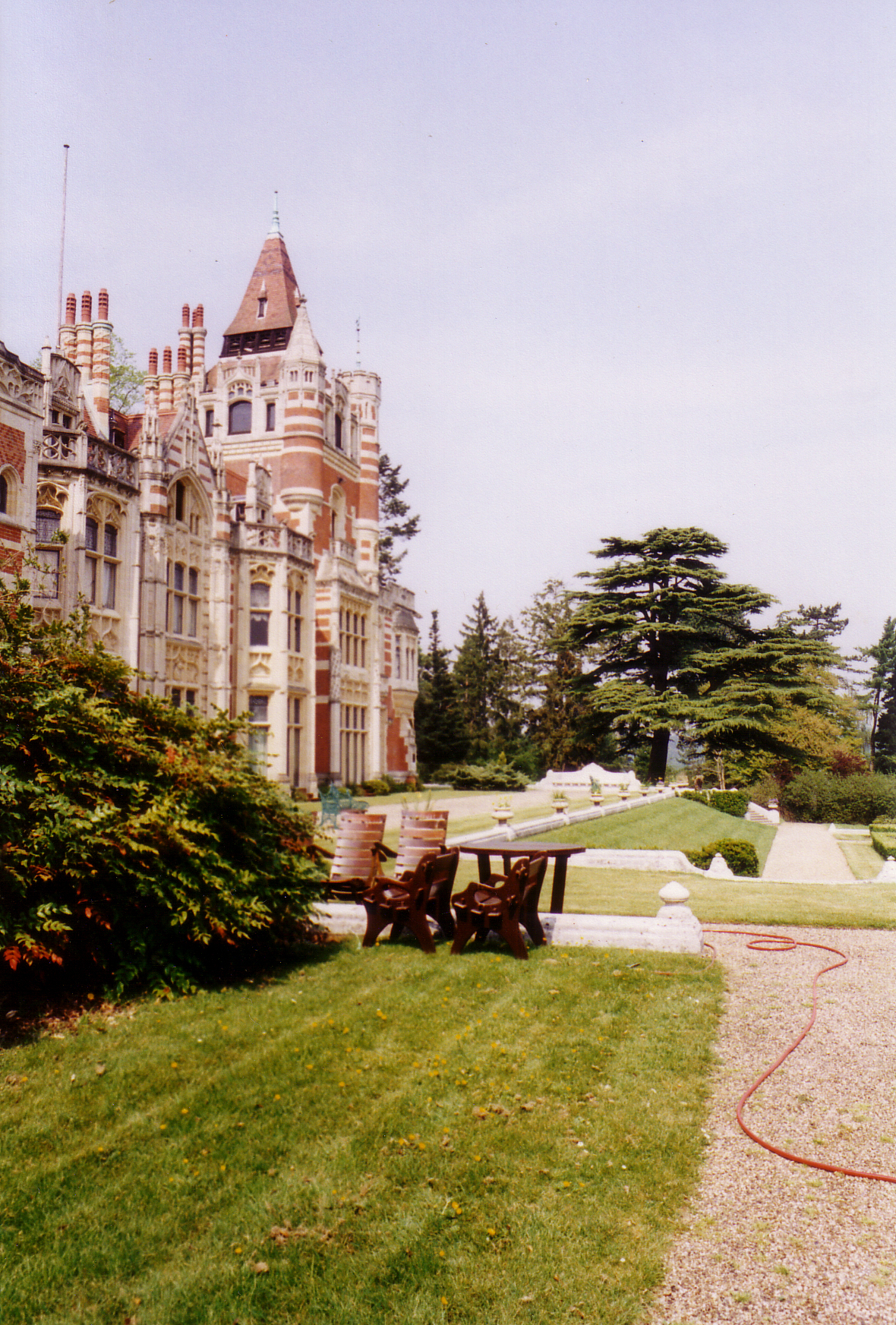
The house and the lawn.

The house from the drive.

The house from the pergola.
The house through the trees.
The Japanese Garden.

The lakes from the house.
The lakes and stepping stones with the house behind.
The summer house.

